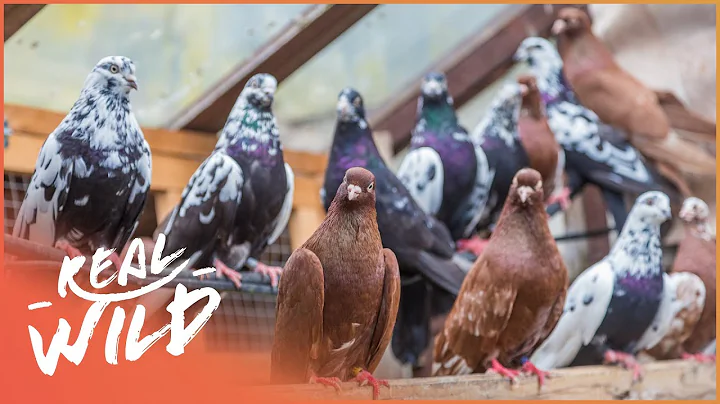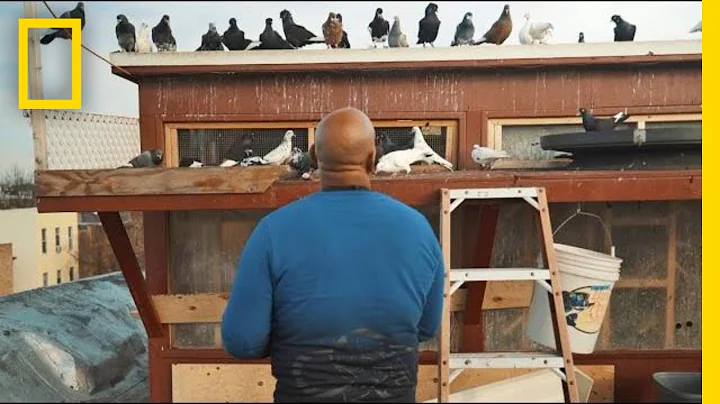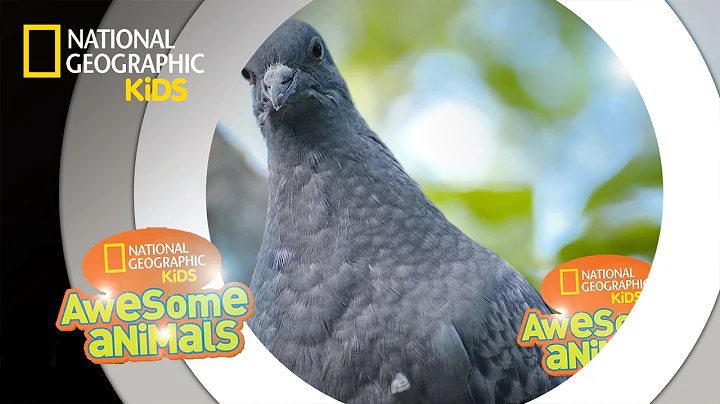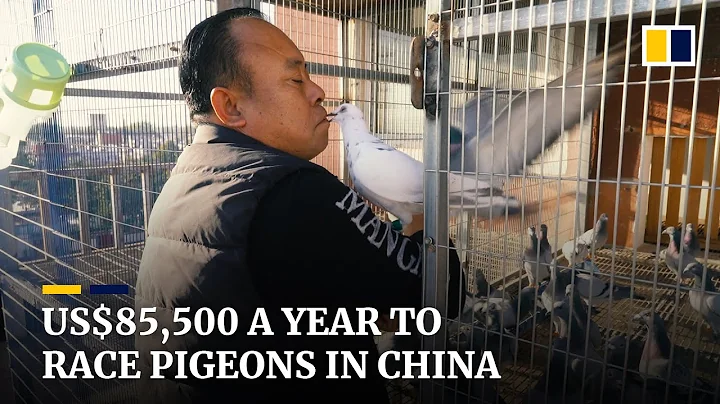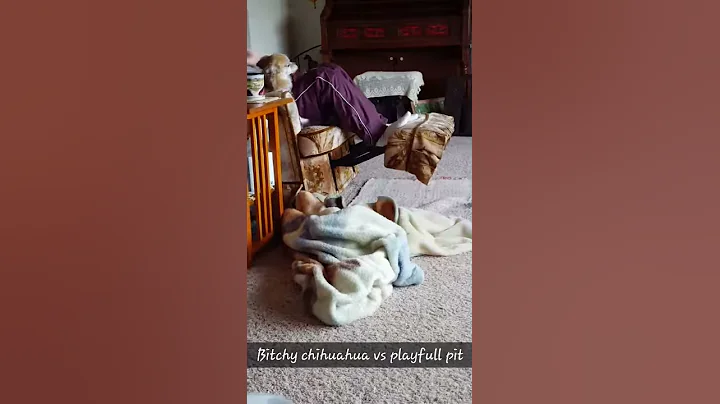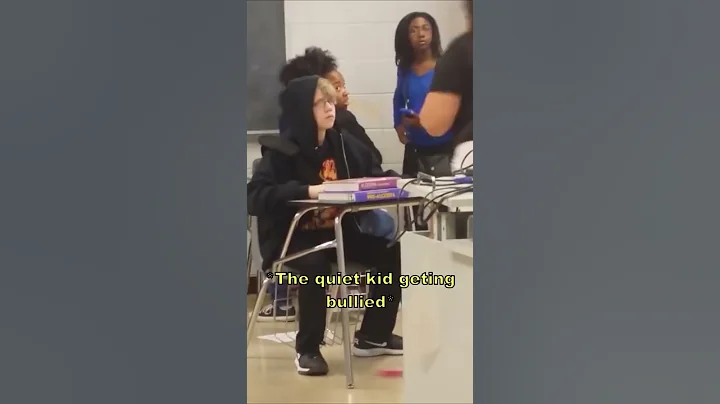
In addition to paying more attention to racing pigeons and , I am also interested in the behavior and management of other animals and livestock. Recently, I watched a documentary related to "Working Dogs" and was fascinated by the two scenes in it. Quite inspiring.
Scenario 1: The breeder of guide dog puts a litter of Labrador puppies in the same environment to observe their reactions to different objects and road conditions, and scores them to select those with breeding potential. Of the individuals, only the very few individuals with the highest scores can be used as seedlings for breeding guide dogs, the next-level ones will be trained as working dogs for other purposes, and the lowest-level ones can only be sold as pet dogs.
Scenario 2: A training subject for a search and rescue dog. The search and rescue dog's job is generally to search for trapped people in places with complex environments. Most disaster-stricken places have rugged roads and complex environments. Search and rescue dogs must not only be agile but also have the ability to challenge dangers. Courage, so trainers will set up some roadblocks in daily training to encourage and train search and rescue dogs to pass, such as training them to climb wooden ladders and other projects that require skill and courage. Only search and rescue dogs that have undergone systematic training can Only when you are in danger can you play your due role.

From the above two scenarios, we can reflect the dual meaning of "training". It can be used to screen out seedlings with cultivation potential, and can also be used to induce or enhance the specific abilities of trained individuals. If you apply this kind of thinking to the training of racing pigeons.
Then we can observe the foothold of the young pigeons when they first learn to fly in the early stage of home flight training, whether they can follow instructions and quickly move into the house in a short period of time after flying, and whether they have bad habits of randomly falling around. Later, during the group flying period, each family flight had different fatigue states when they landed.
(This reminds me of the physical education class in junior high school. Sometimes the teacher would ask the boys in the class to run a thousand meters to save trouble. Although they started at the same time, the time it took to finish the one thousand meters was different. Not only did the students with good physical fitness take a shorter time, but they only took a breather after finishing the run, while the students with poor physical fitness were almost unable to run when they reached 800 meters. The physical fitness of each person can be judged at a glance )
. Pigeons’ intelligence, nesting habit, and athleticism. Therefore, the early domestic flight of young pigeons is not only a gradual development of physical fitness, but also a way to screen out pigeons that lack athletic talent. Just like the previous litter of Labrador puppies, although they are brothers and sisters of the same mother, their talents are not the same. Each has its own advantages and disadvantages. Although racing pigeons focus on pedigree, individual differences in quality should be viewed objectively.
Based on the information I have read in the past, pigeon owners can be said to have "eight immortals crossing the sea" in the training subjects of their own pigeons. Each one shows his or her own special skills. There are all kinds of training methods, and some of them are good at flying. But as far as I know, systematic training is the most important. The training subjects designed for Yunnan military pigeons are more comprehensive.
They will let the trained pigeons fly in different directions such as east, west, north and south, over different terrain conditions such as mountains and lakes, in different weather conditions such as wind, rain and fog, and even after dark that we rarely use in racing pigeons. Training abroad. The biggest difference between
racing pigeons and military pigeons is that if the racing pigeons do not return, they will lose the race at most, but if the military pigeons do not return, it may be a matter of life, so only the most stringent tests can be used to ensure the reliability of the performance of the military pigeons.

The following is a set of systematic training for young pigeons designed based on my experience in training pigeons over the years, either deliberately or accidentally. Since the need to eliminate inferior pigeons has been taken into consideration, the young pigeons have also been considered. The training follows a step-by-step process, I hope it will be a reference for everyone.
According to the development rules of young pigeons, generally 25-day-old young pigeons begin to move into the young pigeon loft and begin to learn to eat independently and become familiar with the pigeon loft environment. At the age of 45 days, they begin to enter the second moulting of body feathers. The moulting will probably be smoother. At about 3 months of age, the body feathers will have completely faded, and physical training for domestic flying can be carried out. During this process, initial attention can be paid to eliminating some individuals with poor physical fitness and poor athletic talent. When
reaches the age of 4 months to 4 and a half months, can stably maintain for one hour at home twice in the morning and evening for more than 20 days, which means it has the physical conditions for external training.
External training operations. Some pigeon owners train in the direction of the competition from beginning to end, while others draw a fan-shaped area in the direction of the competition and conduct multi-point training in this fan-shaped area.
The most "sexy" operation I know is that when the young pigeons are very young, they will pick up individual pigeons in one direction of the loft, such as north, and release them for 20-30 kilometers. After returning successfully, they will change the direction and release them southward next time. Double the distance to 40-60 kilometers to eliminate pigeons that are not flexible and have poor orientation (this method was adopted by Sichuan master Jia Chenggang, the Thai International One Loft Champion).
I think the more moderate initial external training operation is to use the four-way training method around the pigeon loft, because the orientation of long-distance pigeons is mostly just a roughly accurate general direction, and when it comes to the area close to the pigeon loft, it relies more on familiar landmarks around it. Or use the buildings along the way as a reference for homing.
As long as he is familiar with the 30-kilometer radius of the pigeon loft, he can minimize the situation of "sending people home" when returning from a competition.

Another benefit of using the four-way training method at the beginning is that because the direction of each training is different at the beginning, the pigeons have to use their brains to think or activate their orientation ability to return home smoothly. Pigeons that are conditioned to fly back from one direction will be tested and taught a lesson in this training method. The specific operation of
can be to draw four directions of east, west, north and south as the center of the pigeon loft, and train in clockwise order with a straight line distance of 30 kilometers in each direction. Each training interval is 2-3 days, in order to appease the nervousness of the young pigeons when starting training. Depending on the mood and the difficulty of external training, you can fly once in each direction in groups of 3-5 birds depending on the situation. After
has undergone four-way adaptive training in the pigeon loft, it can enter the next stage of fan training. The direction of the fan training can draw a midline between the pigeon loft and the finals, and then draw two lines offset by 45 degrees to the left and right. straight line.
is as shown below: Find a training place 50-70 kilometers away from the northwest, north, and northeast lines, and train and release once in each way in the order of northwest, then northeast, and finally true north. The intervals between releases are 1-2 days, and the birds are released in groups of two during training.

After the second stage of fan training, the young pigeons will be able to withstand longer distance flights at about five years old. At this time, the center line between the pigeon loft and the final venue can be shifted by 22.5 degrees to the left and right to keep the distance. Select a release point in the northwest and northeast each 200 kilometers away. On a sunny day, release a single pigeon and wait until the previous one disappears from sight before releasing another pigeon to test the individual pigeon's directional return ability.
uses the northwest and northeast return data as a reference to more objectively reflect the homing ability of individual pigeons. The reason why it is not 100 kilometers or 300 kilometers is that the difficulty of this test distance is considered for those who have not yet fully developed. Pigeons are just right.

The first three stages of training were all conducted in good weather, and the young pigeons that could return after two single throws of 200 kilometers in different directions all had varying degrees of ability to return independently, and the training was also beneficial. varying degrees of adaptability.
In order to increase the speed of homecoming during the competition and allow the young pigeons to adapt to different weather conditions, the fourth stage of training can shorten the training distance to 50-70 kilometers from the fan training and release point in the previous second stage. , in the order of northwest, north and northeast, each release point of will be trained and released three times in a row. It can be trained for three consecutive days, and then rest for one to two days before training to the next location. During the
period, in addition to heavy rain and fog, the pigeons must be properly adapted to some slightly challenging weather. At this stage, group flying is used to be close to the actual competition, so that some outstanding pigeons can be found among the pigeons that have left the group and returned early. Individually, or through careful observation, changes in the nest love and status of individual pigeons can be discovered.
After a total of nine trips in three directions in the fourth stage of route recognition and adaptability training in different weather conditions, the systematic training of young birds from stages one to four has been basically completed. With this kind of training, the young birds that can be retained are selected and put into the competition. Whether it is designated or a competition encounters bad weather, it will definitely have a better chance of winning than other conventional unidirectional flocks of pigeons.
END
文|Lin Xuguo
[smile]Thanks for reading! If you like this account, you can add a follow. If you want to encourage, please like + comment. See you in the next article!



